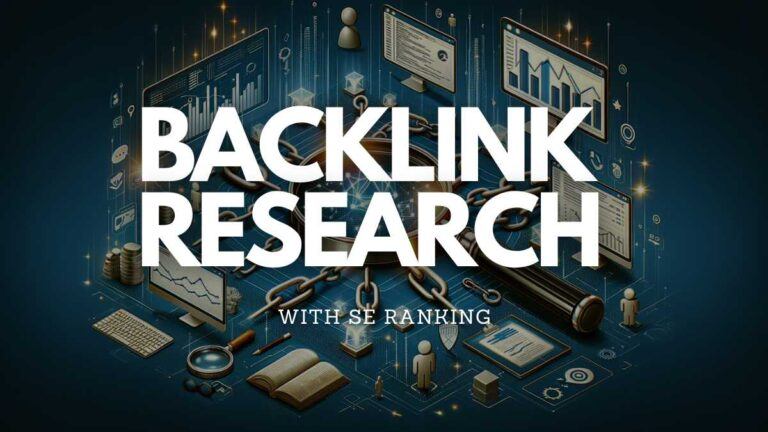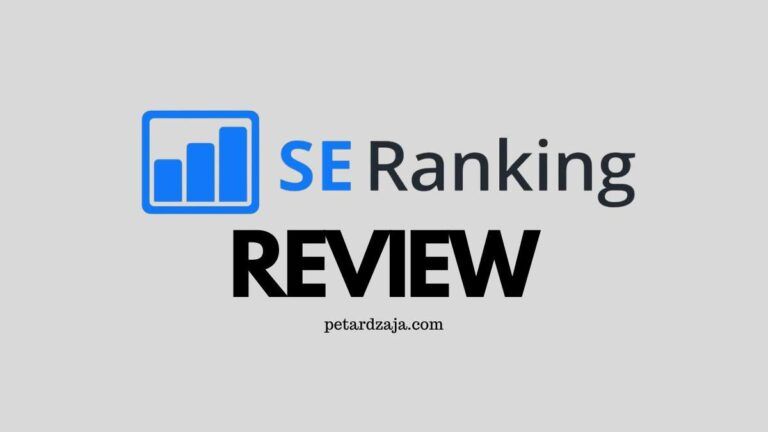Post Planner Review: Ideal for Social Media Beginners?
Ever since Google’s updates took a toll on my sites, I realized I needed to diversify my traffic sources and build a stronger social media presence.
To adapt, I shifted some of my focus to platforms like Pinterest, even launching new sites designed specifically to capture social media traffic.
That’s when I discovered Post Planner – a tool designed to simplify social media scheduling and boost engagement.
I’ve now been using Post Planner for about two months, and I figured it’s the perfect time to share my experience.
If you’re wondering whether this app is worth your investment or if it’s better avoided, read on to find out!
What is Post Planner
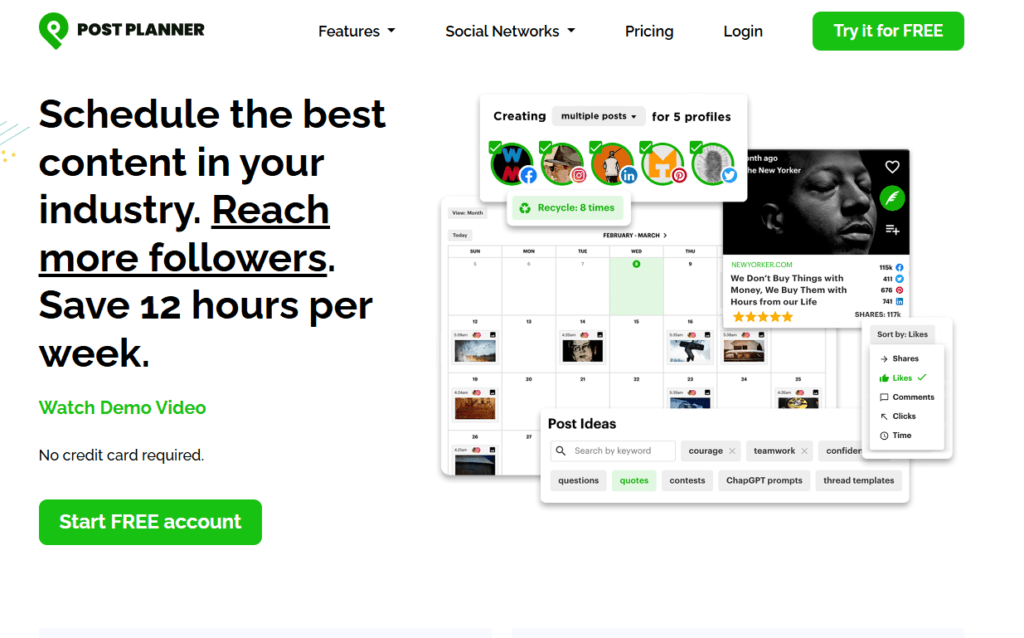
Post Planner is a social media management tool that helps users schedule and publish content across multiple platforms from a single dashboard. It’s compatible with major social networks, so users can streamline their posting without hopping between different apps.
Beyond just scheduling, Post Planner offers features for content discovery, allowing users to find trending posts, videos, and images from sources such as Reddit and YouTube. This makes it useful for filling up a content calendar with a mix of original and curated content, all planned in advance.
So, I’d say that Content Planner’s key idea is to be your all-in-one social media management platform, where you’ll schedule posts, discover new ideas, create new posts, etc.
Social Media Platforms Available on Post Planner
Post Planner supports a range of major social media platforms:
- Google Business
- TikTok
- X (formerly Twitter)
- YouTube

I’ve only connected Pinterest accounts and Facebook pages so far, but it’s good to know that I have the option to connect even more social media accounts if I ever need them.
Pricing Plans on Post Planner
Post Planner offers a variety of pricing options depending on your needs and budget, with plans tailored to both small businesses and larger agencies or enterprises. Here’s a quick breakdown of the options:
| Plan | Monthly Billing | Annual Billing | Recommended For |
|---|---|---|---|
| Starter | $12/month | $7/month | Beginners wanting essential scheduling and content discovery. |
| Growth | $49/month | $37/month | Users already monetizing content who need more features (AI credits, more accounts, etc.). |
| Business | $79/month | $57/month | Small businesses that need advanced scheduling and engagement tools. |
| Agency | $149/month | $107/month | Agencies managing multiple clients, with a need for extensive account limits and tools. |
| Enterprise | $299/month | $207/month | Large organizations needing robust support for a high volume of accounts and advanced features. |
My Post Planner Plan Recommendation
For complete beginners, I’d recommend starting with the Starter plan, which covers all the essentials without overwhelming you with features you might not need right away.
This is the plan I personally chose, and it’s been a great fit for my initial needs.
However, if you’re already earning from your blog or social media channels, the Growth plan could be a better option. It gives you access to more advanced features, such as increased AI credits for content ideas and the ability to connect more accounts, which can make a big difference as your social media management needs to expand.
In my view, anything beyond the Growth plan may not be necessary for most individual users or small teams unless you’re managing accounts for multiple clients.
My Experience with Post Planner: From Setup to Everyday Use
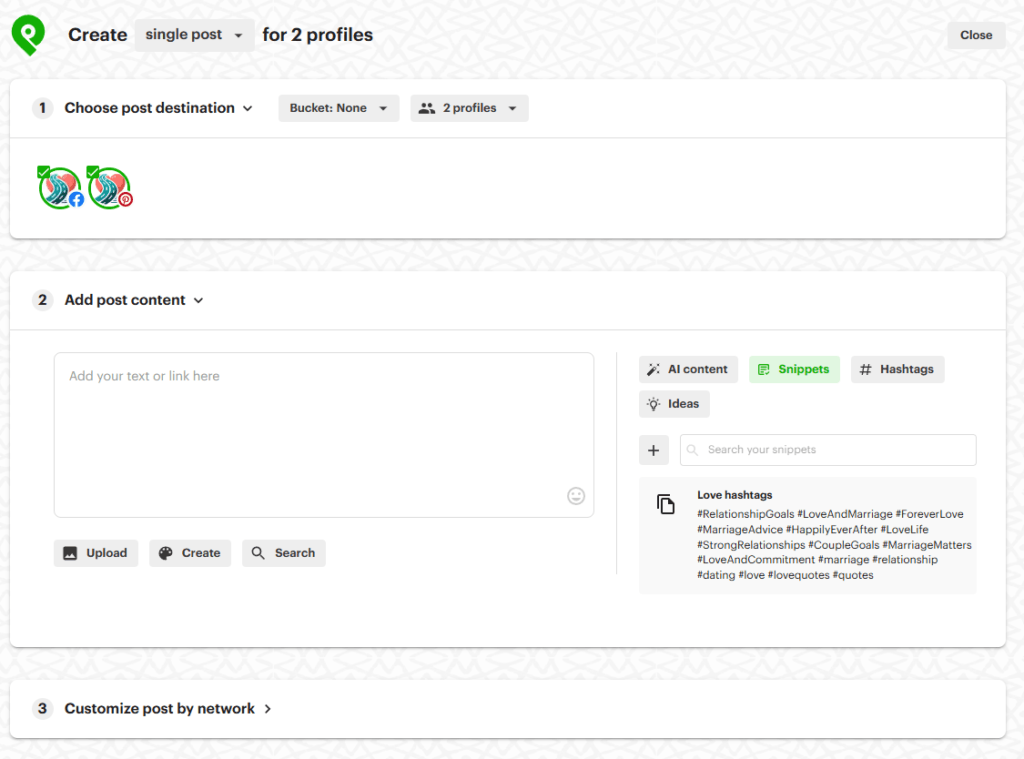
Setting up Post Planner was a breeze. All it took was a few clicks to connect my social accounts – just confirm each one, and you’re ready to start scheduling.
The platform even provides helpful videos to walk you through each feature, which came in handy since some things, like “buckets” and “libraries,” felt a bit confusing at first.
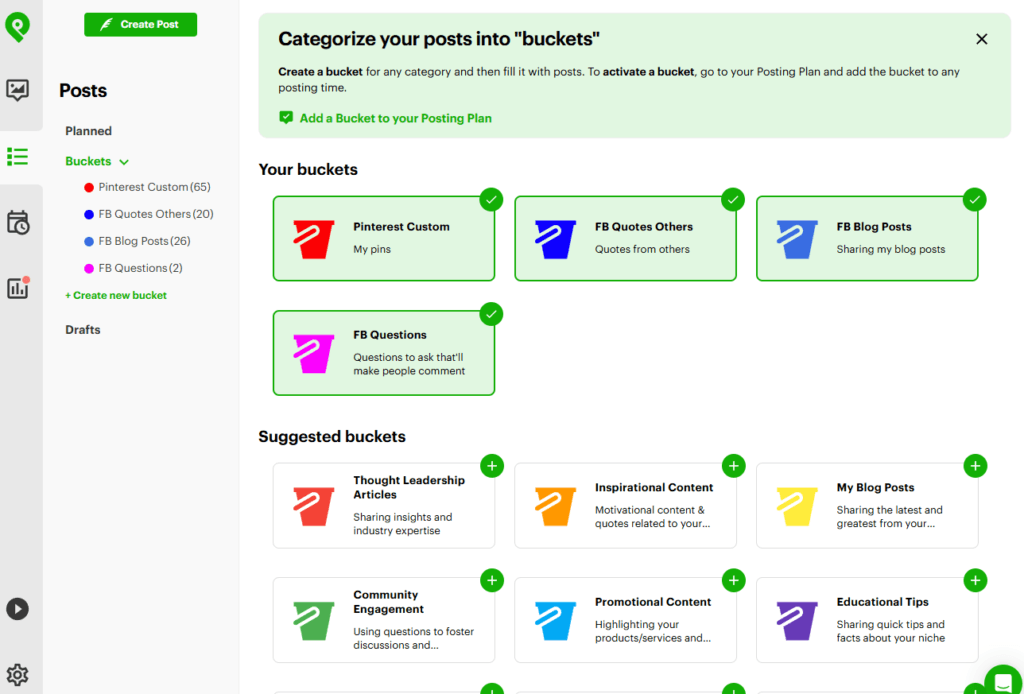
But once I started publishing, everything clicked quickly. Within about 10 minutes, I understood the layout and realized it’s actually very straightforward and logically organized.
Currently, I use Post Planner primarily for scheduling posts on Pinterest and Facebook, and the process has been one of the simplest I’ve encountered. Here’s how it works:
- Creating a Publishing Plan: First, you set up a publishing plan for each social network, choosing days and times for your posts. This way, you have a consistent posting schedule without needing to handle each post manually.
- Using Content Buckets: Next, you upload your content to specific “buckets” for each platform. Post Planner then pulls from these buckets according to the schedule you’ve set, making it easy to stay consistent without repeatedly creating new posts.
- Optional Content Streams: You can also set up “Streams” of other people’s content, which automatically fills your feed with curated posts. I tried this feature briefly but ultimately decided against it since I prefer promoting only my own content.
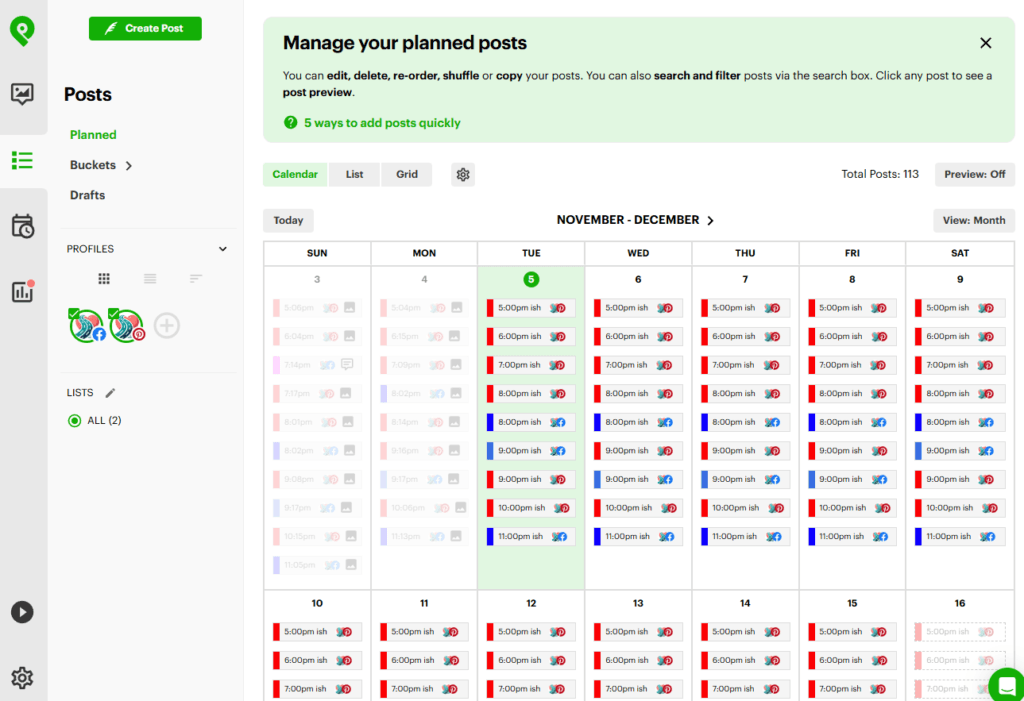
For my routine, I usually spend just two or three days a month on Post Planner to schedule all my content. I’ll upload 80-90 images, add descriptions and URLs (for Pinterest), and then save everything in batches.
This bulk scheduling process is efficient, taking only about 10-15 minutes per session, and works similarly for Facebook.
While Post Planner does offer AI features to generate hashtags, descriptions, and titles, I don’t rely on them much. I typically prepare my descriptions using ChatGPT before uploading, but it’s a useful option if you need quick content ideas directly within the tool.
Key Things I Love about Post Planner
Several features in Post Planner really stand out to me, especially as someone who’s still building up a social media strategy.
Here’s what I like most:
- Affordable Pricing for Beginners: The pricing is a big plus. Not many tools offer a starter plan as low as $12 per month or $7 with annual billing, which is exactly what beginners like me need. I don’t want to pay $50 a month when I’m not even earning from social media yet. Plus, the Starter plan lets me schedule up to 150 posts, which is more than enough for now.
- Quick and Easy Bulk Publishing: Scheduling multiple posts at once is simple, whether I’m uploading images or using an RSS feed. There’s also a .csv upload option, which I haven’t tried yet, but the current methods I use are already saving me tons of time.
- Randomized Post Times for a Natural Look: One feature I really appreciate is the option to have posts go out at random times around my chosen time. For example, if I set a post to publish at 6:00 p.m., it might go out at 5:53 or 6:13 instead. This makes my posting schedule look more natural, which I think helps my pages feel less automated.
- Email Reminders for Empty Buckets: I’ve had times when I forgot to refill my content buckets, and I really appreciate that Post Planner sends an email notification when they’re empty. This feature helps me stay on track without having to check in constantly.
- One Facebook Account, Multiple Pages: With a single Facebook account connected, I can manage all the pages owned by that account. If you’re handling multiple pages, this feature is a lifesaver since you don’t need to connect each page separately. For Pinterest and other platforms, you need separate setups, but for Facebook, this works perfectly.
These features make Post Planner a solid option for anyone new to social media scheduling. It keeps things simple without charging too much or overloading with features I don’t need yet.
Things I Don’t Love So Much
While there aren’t too many things that I dislike about Post Planner, there are a few features I’d like to see handled differently:
- Streams: I’m not a huge fan of the “Streams” feature. It allows you to repurpose content from other pages, which sounds useful, but I’m not sure how legitimate it feels to rely heavily on other people’s content. Plus, constantly reposting from the same 2-3 big pages means you’re likely to lose your unique branding and end up with a feed that doesn’t feel entirely your own. For me, this kind of content curation misses the mark, so I don’t use it.

- The Library: The Library feature is a bit confusing. It allows you to store content, but the limit is only 100 MB – barely anything when you’re working with images or videos. Plus, if you’re uploading directly to buckets, there’s no file size restriction, so the Library just feels unnecessary. There’s nothing actually wrong with it; it’s just not something I’ve found any real use for.
- Feature Restrictions on the Starter Plan: While the Starter plan is affordable, some small features are missing. For example, I wanted to post on Facebook with a colored background, but that option isn’t included in the Starter plan. It’s a small thing, but it feels like a pretty basic feature to be missing.
Overall, there isn’t much to complain about. These are just minor things that haven’t affected my experience too much but might be good to know before diving in.
Is Post Planner Good for You? My Recommendation
If you’re a complete beginner or just starting out with social media scheduling, I’d say Post Planner is one of the best platforms to try. It’s straightforward and doesn’t overwhelm you with a massive number of features, yet it still has all the essentials you need to get started.
The platform strikes a nice balance between being feature-rich and simple enough for anyone to use. You get effective scheduling, content curation, and useful reminders without a steep learning curve, which makes it ideal if you’re just learning the ropes.
For beginners, the affordable Starter plan makes it especially worthwhile, giving you the core tools without a big financial commitment. Overall, I think it’s a solid choice if you’re looking to stay consistent on social media without needing advanced tools or a high budget.
Alternatives to Post Planner
When I was looking for a social media scheduling tool, I researched a few alternatives, but each one had reasons why it wasn’t the right fit for me at the time:
- Buffer
Buffer’s simplicity and affordable pricing initially appealed to me, with a starting price of $6 per profile. However, since I needed to manage multiple accounts, the cost quickly added up.
- SocialPilot
SocialPilot has powerful scheduling and analytics features, especially for teams or users managing many accounts. But at $25.50 per month (annually), it felt pricey for my needs as a beginner. It seemed more suited to businesses managing clients or larger teams, so I held off.
- Tailwind
Tailwind is a solid choice for Pinterest and Instagram users, with a starting price of $14.99 per month if billed annually. Since it’s designed around Pinterest scheduling, I considered it briefly, but wanted something more towards the beginners.
- Later
Later offers a visual scheduling interface that’s excellent for Instagram-focused brands. It even has a free plan, with paid options starting at $18 per month (annual billing). It felt Instagram-centric, and I wanted a more all-in-one solution.
In the end, I went with Post Planner because it offered the essentials at an affordable price, without the extra costs or feature overload that I didn’t need as a beginner.


